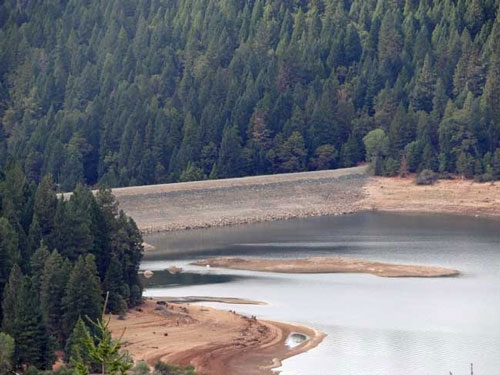
The Golden State is drying up and it could have repercussions for its real estate market. Lawmakers have called for unprecedented measures to curb residents’ water consumption in response to a severe drought, now running into its fourth year.
Gov. Jerry Brown last week called for a 25 percent reduction in water consumption throughout the state. The move will force a change among home owners and communities.
As water bills get more pricey, home owners will need to find ways to conserve, and their outdoor landscaping may be one likely place to do it. Lush lawns will need to be uprooted in favor of more drought-tolerant ones. Those long-held favored aesthetics for green yards and colorful, water-loving plants will need to shift among residents. “This will change what Californians see as beautiful,” says Heather Cooley, water program director for the Pacific Institute, an Oakland, Calif.-based environmental research group.
Also, resort communities in the state — known for their green oasis looks — are growing concerned at how the water reduction will affect their communities. For example, Palm Springs – which is in the middle of the desert – may see some of the biggest repercussions to its real estate. Known for its green golf courses, businesses will need to look for ways to conserve.
The daily per capita water use in Palm Springs is 201 gallons – more than double the state’s average. Palm Springs has ordered 50 percent reduction in water use by its city agencies. The city plans to replace lawns and annual flowers around the community with water-saving native landscapes. It also is paying residents to replace their lush green lawns with rocks and desert plants, as well as even offering rebates to those who install low-flow toilets too.
“Years ago the idea was, come to Palm Springs, and people see the grass and the lushness and the green,” says David Ready, the city manager. “We’ve got to change the way we consume water.”
Meanwhile, in the agricultural Central Valley of California, farmlands are drying up and unemployment is surging among farm workers. Some communities are seeing an exodus of residents as some farmers are relocating 70 miles out or more in search of work.
The drought could also prompt a reduction in housing construction, says Richard White, a history professor at Stanford University. That could come at a time when more residential development is needed in cities like Los Angeles and San Francisco to meet higher demand too, he says.
“It’s going to be harder and harder to build new housing without an adequate water supply,” White says. “How many developments can you afford if you don’t have water?”
Source: “California Drought Tests History of Endless Growth,” The New York Times (April 5, 2015)
Related articles
Help keep this blog going
Call or write today for all your real estate needs
John J. O’Dell Realtor® GRI
O’Dell Realty
(530) 263-1091
BRE#00669941
Error: Contact form not found.
